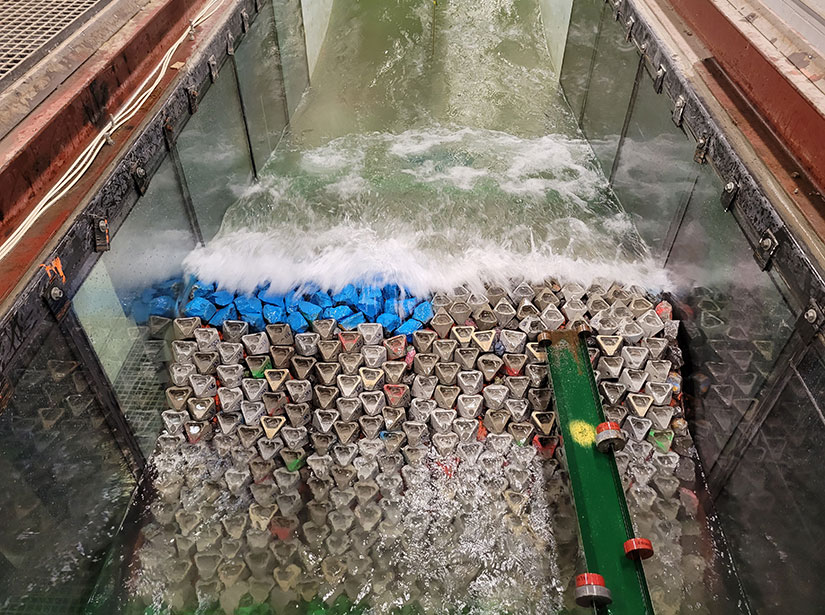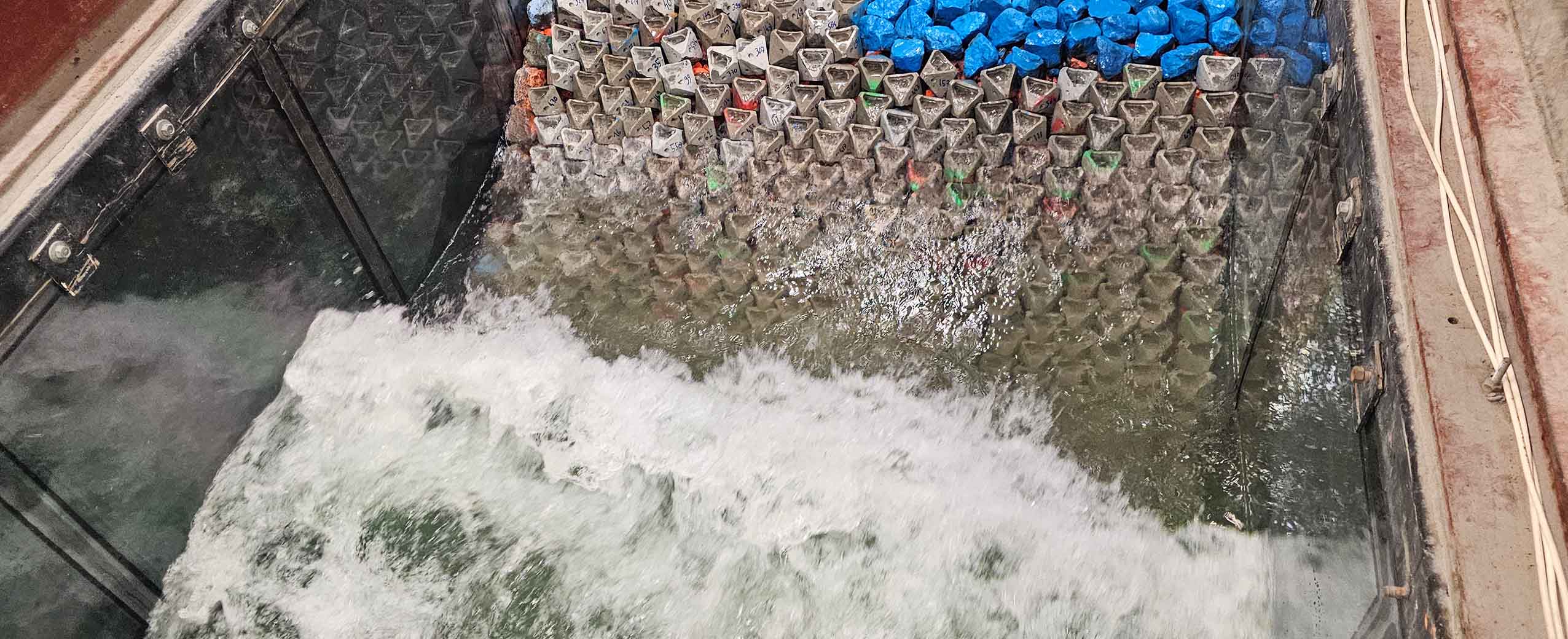ECOncrete’s Coastalock single-layer armor units were recently tested in collaboration with the National Research Council of Canada (NRC) and the University of Ottawa. Led by researchers Serim Dogaç Sayar, Scott Baker, and Dr. Ioan Nistor, the study focused on evaluating the hydraulic stability and performance of these innovative units. Below, S. Dogaç provides a brief summary of the testing process. Dogac presented these findings at ICEC 2024 in Québec City and ICCE 2024 in Rome. More details are available upon request.
Concrete structures have traditionally been used to protect shorelines from erosion, often disrupting local ecosystems in the process. To address this, ECOncrete developed Coastalock armor units, eco-friendly concrete blocks designed to provide effective coastal protection while simultaneously promoting a diverse aquatic habitat.
Hydraulic Performance Tests of Coastalock Single Layer Armor Units
The Coastalock units were tested at NRC’s Large Wave-Current Flume facility in Ottawa, Canada, where two common types of model breakwaters were constructed at large scale (1/15). The low-crested and emergent rubble mound breakwater (RMBW) models were built as permeable structures using core material, underlayer rocks, toe armor, and Coastalock single layer armor units placed along the seaside, crest, and lee side of the breakwaters. More than 600 model scale replica Coastalock armor units were produced, each weighing around 1 kg.

Fig 1. Coastalock armor units on Emergent RMBW model on 1/15 scale
The units demonstrated commendable resilience under a wide range of wave conditions. The low-crested breakwater model showed efficient wave breaking performance with no failures, while the emergent RMBW model displayed expected levels of overtopping and wave reflection, similar to traditional rubble mound rock breakwaters.
The research also focused on the influence of the size of the underlayer rocks beneath the breakwater’s armor layer and the lateral spacing between Coastalock units on the stability of the breakwater.

Fig 2. Waves breaking on Emergent RMBW Model
The tests highlighted the importance of hydraulic stability and performance in armor units, especially in protecting coasts from erosion and storm surge impacts. The Coastalock units’ ability to withstand severe conditions while offering significant ecological benefits marks a significant advancement in sustainable coastal engineering.
Significance of Ecologically Engineered Armor Units
This project reflects a growing trend towards integrating sustainability into coastal protection strategies and sets the stage for further exploration and potential broader application of these innovative units in shoreline protection projects. The collaboration between ECOncrete, the University of Ottawa, and NRC demonstrates a commitment to developing effective and environmentally responsible solutions for coastal defense.
More on the Coastalock:
- NRC article on Coastalock: Eco-friendly breakwaters do double duty as welcoming homes for marine life
- Coastalock in Port of San Diego Coastal Protection Project
- Case Study: Blue Port Infrastructure at the Port of Vigo – the Living Ports Project
- Abstract of the Coastalock Research for Coastlab 2024 by S. Dogac (Partial Findings)
- Canada Investing in Coastal Resilience and Marine Ecosystems
